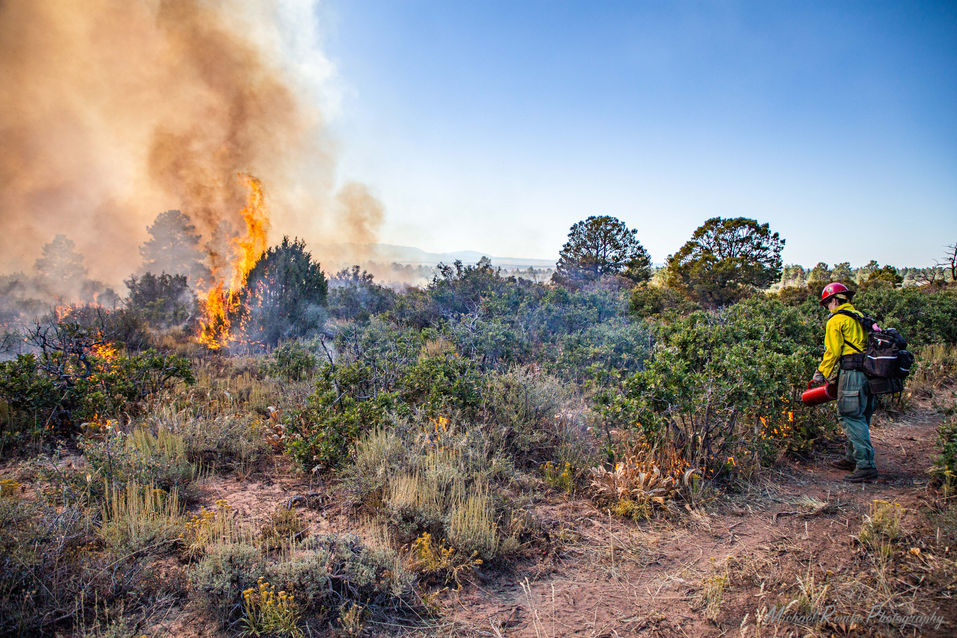
~ Forests
Forests are where I spend most of my time. Since 2008, I have been collecting data in forests and thus walking to random points on a map in forested landscapes. Dr. Julie Korb of Fort Lewis College inspired the connection with forests. The complexity of long lived, wooden plants, shaped by insects, fire, and stories of over harvesting, restoration and un-precedent disturbances as a legacy of the history of people's decision making. Recently, having lived in Durango during the 54,00 acre 416 Fire of 2018, I have begun researching this landscape and other post-fire landscapes in partnership with Dr. Korb. Such collaboration has resulted in falling in love with the 416 Fire landscape, thus, I have included a separate gallery dedicated to this specific forest. Additionally, given the mesmerizing effect of fire, I have had the opportunity to photograph a few prescribed burns and have also included a separate gallery on fire.
~ Forests
From the low elevation woodlands where Juniper twists in the wind to the Spruce-Fir forest that fade out into alpine tundra, forests are full of life. Sun hardens into wood and flows from the sky to soil. Carbon transform from gas to furniture. Humans have lived in and adjacent to forests for thousands of years. We build our homes from trees, the railroads were built by cutting. Forests have been burned to support grass and farmland production. Forests have vanished, and forests have densified because of lack of fire. Forests are full of complexities and full of beauty.
~ 416 Fire
The Hermosa Creek Watershed is a special place. Its steep slopes prevented logging. Its geography on the east side of the La Plata Mountains results in above average precipitation for the elevation and average temperature, making it warm and wet. The uplifted limestone soils derived from the Hermosa Formation is nutrient rich and productive riddled with small streams that feed into numerous perennial streams. The result is a place that grows trees, really big trees. The area is home to forest types that range from Ponderosa pine to Spruce-fir. The geography houses some of the states and regions largest Ponderosa pine, Southwestern white pines, Douglas firs, and Blue Spruce. Old meadows stand as relicts of fire past. The winter of 2017, 2018 was dry. Bone dry, and on June first an ember from the adjacent Durango Silverton Narrow Gauge Railroad's Coal Fired Train started a fire. That fire would grow to burn 54,000 acres over the next 5 months. Driven by Fuels after a Tropical Depression brought much needed rain, the fire tended to burn at low severity in Ponderosa Pine, moderate/mixed severity in the mixed conifer and high severity in spruce-fir forests. The result is a mosaic that more or less matches what fire ecologist call the historical range of variation for these forest types. Most suppression efforts were focused on the Wildland Urban Interface and thanks in part to defensible space and numerous tanker drops, no homes were destroyed. As for the trees, some large trees died, many survived. Some of the regrowth contrasted against the blackened trees is stunning. Part of wishes I spent more time learning forest photography prior to this fire only to have the before and after photos, however, this landscape is where my forest ecology has grown tremendously., in the post fire landscape. I am grateful to do research in the drainage, and to k now this place.
~ Fire
If you have ever starred at your campfire or fireplace fire, you have been lost in the concept of combustion. You have mesmerized by the conversion of solid carbon back into carbon dioxide. Fire is complicated. If you built the campfire that hypnotized you, you have watched how important the heating of fuel is for your ignition to take. You have watched flames rise and dance in the wind and their fuel and oxygen dynamics covary together. Now imagine building a campfire in a forest, where wind, fuels, and topography interact to form complex movement of flames. Forests are designed to burn. Some with more frequency than others. Frequent fires in Ponderosa pine burn litter and ground fuels at low intensities. Add more fuel to the mix, and the bigger and more intense the fire. Move up the mountain side into mixed conifer forests and spruce-fir, you are effectively adding more moisture, and fire becomes less frequent. Watching the flames dance in the turbulence of the forest is thrilling and beautiful.










































































